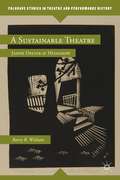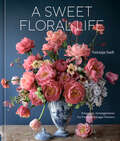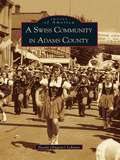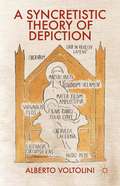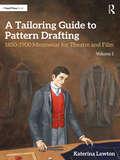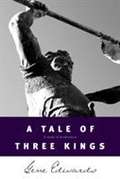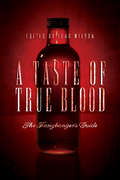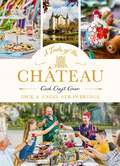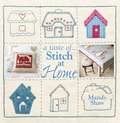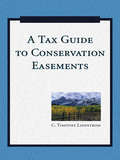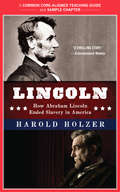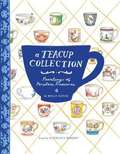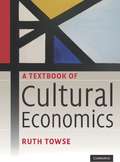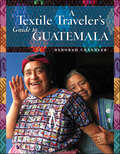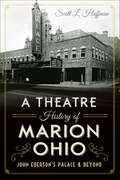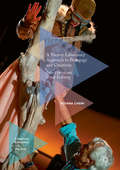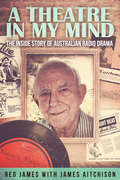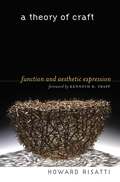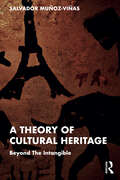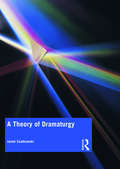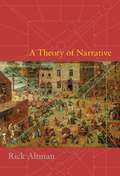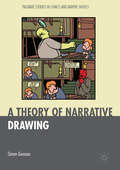- Table View
- List View
A Sustainable Theatre
by Barry B. WithamBegun as an audacious experiment, for thirty years the Hedgerow Theatre prospered as America's most successful repertory company. While known for its famous alumnae (Ann Harding and Richard Basehart), Hedgerow's legacy is a living library of over 200 productions created by Jasper Deeter's idealistic and determined pursuit of 'truth and beauty. '
A Sweet Floral Life: Romantic Arrangements for Fresh and Sugar Flowers [A Floral Décor Book]
by Natasja SadiLearn how to create exquisite, lifelike sugar flowers and arrange them with fresh blooms in the floral arrangements of your dreams—regardless of season or availability.&“A Sweet Floral Life is pure magic.&”—Ariella Chezar, author of The Flower Workshop and Seasonal Flower ArrangingRising Instagram star Natasja Sadi&’s floral arrangements have a sumptuous, old-world look straight out of a classical painting. But among the glorious profusion of fresh flowers, there is often a surprise twist: handmade sugar flowers (traditionally used in cake decorating) that are indistinguishable from real ones and last forever.In A Sweet Floral Life, Natasja guides you through her creative process of flower arranging and developing your personal style, along with tutorials for seasonal arrangements, living and entertaining with flowers, and how to photograph flowers. A former fashion designer, Natasja began making flowers out of sugar to honor her African and Indonesian ancestors who worked in the sugarcane fields of Suriname. In A Sweet Floral Life, Natasja provides steps for sculpting sugar flowers, a versatile medium with limitless possibilities—they can be used in fresh floral arrangements, displayed on their own as unique home décor, or used to adorn cakes. And whether it&’s the middle of summer or the dead of winter, sugar flowers are always in season and always in perfect full bloom.Capture the romance, set the mood, and be swept away by gorgeous and inspiring floral art with A Sweet Floral Life.
A Swiss Community in Adams County
by Naomi Eugene LehmanIn the mid-19th century, many Swiss families fled their homeland in order to avoid the rigid restrictions placed on religious and political beliefs. Many found solace in the little town of Berne, Indiana, and in the surrounding communities of Adams County. In 2002, Berne will celebrate 150 years of settlement and growth. In preparation, Naomi Lehman has compiled a unique visual history of these family-oriented communities, chronicling the history of the rich ancestral Swiss Emmenthaler culture that is still alive in the area today. Most of Adams County's early settlers hailed from Switzerland's capital of Bern, located in the Canton of Bern, and made the capital the namesake of their new home. The heavily forested and swampy land was cleared and tiled. Homes were constructed, churches flourished, and family businesses opened, some still existing today. Captured here in over 200 vintage images are the trials and triumphs of a classic Swiss community, including photographs of early farming families, industries and businesses, churches, and schools, blanketing not just Berne, but Geneva, Decatur, Linn Grove, and Monroe in Adams County, as well as Bluffton and Vera Cruz in neighboring Wells County.
A Syncretistic Theory of Depiction
by Alberto VoltoliniWhat is depiction? This is a venerable question that has received many different answers throughout the whole history of philosophy, especially in contemporary times. A Syncretistic Theory of Depiction elaborates a new account on this matter by providing a theory of depiction that tries to combine the merits of the previous theories while dropping their defects. It is argued that a picture is a representation in a pictorial or figurative mode, and its 'figurativity' is given by a special perception, perceiving-in, whose nature is reconceived. Such a perception inter alia grasps some properties which the picture's vehicle has in common with what is perceived in it; by so doing, that perception provides the picture with a figurative content. In contrast, the picture's representational value, its subject or its pictorial content, is given by a conventionally or causally based selection out of that figurative content.
A Tailoring Guide to Pattern Drafting: 1850-1900 Menswear for Theatre and Film, Volume 1
by Katerina LawtonA Tailoring Guide to Pattern Drafting offers pattern drafting instructions for men’s most popular tailored garment styles from 1850 to 1900, used in theatres and film productions today. The book features a wide range of 19th-century garments, providing information and detailed instructions on the frock coat, morning coat, lounge jacket, smoking jacket, shirt, waistcoats, trousers and long-riding breeches. It includes a brief history of each garment, accompanied by colourful illustrations and easy-to-follow instruction to draft historical 19th-century silhouettes for modern performances. The book features: A brief history of each garment, accompanied by full-colour illustrations. Modern step-by-step instructions with clear diagrams to draft 19th-century menswear. Instructions incorporating both the imperial and metric systems. Recommendations on choosing the appropriate modern-day equivalent fabric. Recommendations on the quantity of the fabric. Recommendations on the button size to make the garment appear more authentic. A table of Dress Code Ethics for Gentlemen from 1850 to 1900. Descriptions and visual information on how to take accurate measurements. Photographs of costumes and images of the 19th-century Carte de Visite for visual support. A Tailoring Guide to Pattern Drafting is intended for anyone with a desire to learn or refine their costume-cutting skills for theatre and film production. The book is aimed at undergraduate and graduate students, tutors and both amateur and professional makers interested in the subject. To access the author’s YouTube channel, featuring 130 step-by-step lessons to make a 19th-century Morning Coat using classical tailoring techniques, visit www.routledge.com/9780367265335.
A Tale of Three Kings
by Gene EdwardsTo the brokenhearted Christians coming out of authoritarian groups, seeking solace, healing and hope. May you somehow recover and go on with Him who is liberty.
A Taste of Disney: Bite-Size Recipes in a Snack-Size Book
by Insight EditionsEnjoy a taste of Disney with this pocket-size cookbook of snacks inspired by your favorite animated adventures!Celebrate your love of Disney films with this adorable cookbook filled with the most delicious snacks from Insight Editions&’ bestselling Disney and Pixar cookbooks. BITE-SIZE AND DELICIOUS: Tempt your tastebuds with these simple recipes featuring everyday ingredients. Enjoy White Rabbit's Garden Crudité (Alice in Wonderland), Merida Cranachan (Brave), Bare Necessities Banana Muffins (The Jungle Book), Mug of Meat (The Emperor's New Groove), Icicle Cookies (Frozen), and so many more delicious creations to munch on! GREAT GIFT: Perfect for holidays, party hosts, birthdays—and un-birthdays, of course! It's sure to be a delight for any Disney fan BEAUTIFUL AND CUTE: This fully licensed cookbook features gorgeous recipe photos, beautiful styling, and artful appearances of the characters you love
A Taste of Disney: Sippable Recipes in a Pint-Size Book
by Insight EditionsToast your favorite Disney film with this pocket-size recipe book bursting with drinks inspired by your favorite animated adventures!Soak up this adorable recipe book featuring gorgeous, tasty nonalcoholic recipes for delectable drinks from Insight Editions&’ full line of Disney and Pixar best-selling cookbooks. EASY AND DELICIOUS: Raise a glass to this recipe book filled with simple instructions featuring everyday ingredients to brew up delicious drinks for all ages. Enjoy Lu'Au Blue Hawaiian (Lilo & Stitch), Black Forest Hot Cocoa (Snow White and the Seven Dwarfs), Growth Potion (Alice in Wonderland), Tiana Mardi Gras Smoothie (Princess and the Frog), and so many more drinks to sip and savor GREAT GIFT: Perfect for holidays, party hosts, birthdays—and un-birthdays, of course! It's sure to be a delight for any Disney fan BEAUTIFUL AND CUTE: This fully licensed cookbook features gorgeous recipe photos, beautiful styling, and artful appearances of the characters you love
A Taste of True Blood: The Fangbanger's Guide
by Joseph Mccabe Nick Mamatas Alisa Kwitney Maria Lima Bev Katz Rosenbaum Philippa Ballantine Leah Wilson Jonna Rubin Paula Rogers Jacob Clifton Daniel M. Kimmel Kirsty Walker Peg Aloi Vera Nazarian Peter B. LloydTrue Blood, Alan Ball's critically acclaimed television adaptation of Charlaine Harris' bestselling Southern Vampire mysteries, is HBO's most-watched show since The Sopranos, averaging over 12 million viewers an episode in its second season. Thanks to its large, dedicated fanbase, it won the People's Choice "Favorite TV Obsession" award in early 2010.A Taste of True Blood: The Fangbanger's Guide gives those fans something to savor between episodes-and whets their appetite for more. Covering the show's first two seasons and released just in time for the third (with real-time online updates from the book's contributors throughout season three), the book includes pieces on: Vampire Bill's season 2 slide from hot to not Sookie's mind-reading talents as a critique of our oversharing Facebook culture What a Louisiana setting adds to the traditional vampire myth Why the television series had to differ from the books (co-written by the Southern Vampire mysteries' editor Ginjer Buchanan) And much more, from shapeshifters to maenads to Merlotte'sA Taste of True Blood also includes a quick reference guide to the show's first two seasons.
A Taste of the Château: Master the art of seasonal celebrations with over 100 delicious recipes, beautiful crafts and inspiring gardening projects
by Dick Strawbridge Angel StrawbridgeMaster the art of seasonal celebration with over 100 delicious recipes, beautiful crafts and inspiring gardening projects from Sunday Times bestselling authors Dick and Angel StrawbridgeDrawing on their many years of hosting friends, family and guests at Château-de-la-Motte Husson , this book is Dick and Angel's definitive guide to creating magical and unforgettable celebrations in your very own home.Whether it's enjoying the blossoming of spring with a delicious Easter lunch, soaking up the joys of summer with picnics and outdoor games, harvesting the bounty of the garden produce in autumn or creating an unforgettable family Christmas during winter, Dick and Angel have it covered. Packed full of fun and creative ideas - as well as plenty of tips and tricks for giving it a go yourself - you'll find something here for every occasion.It's time to have a go at celebrating the Château way!
A Taste of the Château: Master the art of seasonal celebrations with over 100 delicious recipes, beautiful crafts and inspiring gardening projects
by Dick Strawbridge Angel StrawbridgeMaster the art of seasonal celebration with over 100 delicious recipes, beautiful crafts and inspiring gardening projects from Sunday Times bestselling authors Dick and Angel StrawbridgeDrawing on their many years of hosting friends, family and guests at Château-de-la-Motte Husson , this book is Dick and Angel's definitive guide to creating magical and unforgettable celebrations in your very own home.Whether it's enjoying the blossoming of spring with a delicious Easter lunch, soaking up the joys of summer with picnics and outdoor games, harvesting the bounty of the garden produce in autumn or creating an unforgettable family Christmas during winter, Dick and Angel have it covered. Packed full of fun and creative ideas - as well as plenty of tips and tricks for giving it a go yourself - you'll find something here for every occasion.It's time to have a go at celebrating the Château way!
A Taste of... Stitch at Home
by Mandy ShawThree sample projects from Mandy Shaws "Stitch at Home," including a pretty place setting tablecloth, summery bunting and a selection of cutwork cushions (plus an adorable mini pincushion ). These sweet stitchery and applique projects are perfect to get you sewing Each project features step-by-step instructions and illustrated techniques.
A Tax Guide to Conservation Easements
by C. Timothy LindstromVoluntary land conservation, resulting from increasingly alluring tax benefits, has significantly changed the face of land use in the United States and promises to have an even more significant influence in the future. There are more than 1,500 land trusts in the U.S. today, involving millions of acres of land that have been permanently protected by conservation easements. Most of these land trusts depend heavily upon the significant tax benefits offered by the federal tax code as an incentive for voluntary land conservation. However, only a very small percentage of land trust personnel, landowners, or even government officials fully understand the complexity of the requirements for these tax benefits. This is a comprehensive book on the tax benefits of the charitable contribution, or bargain sale, of a conservation easement. It provides a detailed explanation of the complex and extensive requirements of the federal tax code and related concepts, including the rules governing the operation of tax-exempt organizations such as land trusts. Clearly written, systematic in its coverage, it is intended to be of value for anyone who deals with land trust issues as well as interested lay people. Structured for easy reference, A Tax Guide to Conservation Easements is designed to be used as a resource tool. Related topics are cross-referenced throughout. All principles in the book are illustrated with one or more useful examples. The tax benefits of contributing a conservation easement are unquestionably the heart of voluntary land conservation today. Knowledge of the tax law relating to land trusts and conservation easements is vital to properly establishing and managing land trusts and to insuring the tax deductibility of conservation easements. The future of voluntary land conservation is dependent on a clear understanding of tax policy. Complete, meticulous, and up to date, A Tax Guide to Conservation Easementsis an essential handbook.
A Teacher's Guide to Lincoln
by Harold Holzer Amy JurskisFor teachersWe know that the Common Core State Standards are encouraging you to reevaluate the books that you assign to your students. To help you decide which books are right for your classroom, each free ebook in this series contains a Common Core-aligned teaching guide and a sample chapter.This free teaching guide for Lincoln: How Abraham Lincoln Ended Slavery in America by Harold Holzer is designed to help you put the new Common Core State Standards into practice."The book is a delight, written for young people who may be discovering Lincoln and the Civil War for the first time. . . This may be the book that brings along a whole new generation of Lincoln fans."--Washington PostHow did President Abraham Lincoln come to believe that slavery was "morally wrong," and that Congress needed to pass a law to abolish it once and for all? What did he do in January 1865--three months before he was assassinated--to ensure passage of the Thirteenth Amendment?This fast-paced, riveting book answers these questions and more as it tells the story of Lincoln's life and times from his upbringing in Kentucky and Illinois, through his work as a lawyer and congressman, to his candidacies and victory in two Presidential elections. It also describes Lincoln's duties in the Civil War as Commander-in-Chief, his actions as President, and his relationships with his family, his political allies and rivals, and the public who voted for and against him. Harold Holzer makes an important era in American history come alive for readers of all ages.An official companion to Steven Spielberg's Oscar Award-winning film Lincoln, the book also includes thirty historical photographs, a chronology, a cast of characters, texts of selected Lincoln writings and speeches, a bibliography, and a foreword by the author about his experience working as a consultant on the movie.
A Teacup Collection
by Hatch Kathleen MorrisIn paintings as pretty as the porcelain they depict, this gift book celebrates one of the finest teacup collections in the world: the 300-piece archive of the Clark Art Institute, which dates back to the eighteenth century and represents coveted designs of the day from Europe and China. Artist Molly Hatch, with exclusive access to this largely unviewed collection, pored over the details of each cup to create this visual treat. Including page after page of paintings of the cups, and led off by introductory essays, this is both an intriguing reflection on the art of collecting and an utterly charming gift for tea drinkers and teacup collectors.
A Textbook of Cultural Economics
by Ruth TowseWhat determines the price of a pop concert or an opera? Why does Hollywood dominate the film industry? Does illegal downloading damage the record industry? Does free entry to museums bring in more visitors? In A Textbook of Cultural Economics, one of the world's leading cultural economists shows how we can use the theories and methods of economics to answer these and a host of other questions concerning the arts (performing arts, visual arts and literature), heritage (museums and built heritage) and creative industries (the music, publishing and film industries, broadcasting). Using international examples and covering the most up-to-date research, the book does not assume a prior knowledge of economics. It is ideally suited for students taking a course on the economics of the arts as part of an arts administration, business, management, or economics degree.
A Textile Traveler's Guide to Guatemala
by Deborah ChandlerThe vibrant character of Guatemala is most visible in its handwoven textiles, which are still in everyday use and readily available in native markets all over the country. A Textile Traveler's Guide to Guatemala is an excellent resource for discovering artisans, markets, shops, and those storied regional textile traditions. Geared to independent-minded travelers, this guide presents the safest and most accessible methods of travel, where and when to go, where to stay, and what to eat. Expert advice helps the traveler know what to look for, how to distinguish high-quality work, and how to bargain intelligently and ethically. With abundant photographs, this guide celebrates the color, joy, and energy of folklife in Guatemala.
A Theatre History of Marion, Ohio: John Eberson's Palace And Beyond (Landmarks)
by Scott L. HoffmanOne of the last remaining atmospheric theatres in the nation, elegant Marion Palace Theatre holds a storied history behind its curtains. From the "Wigwam," the Grand Opera House and Germania Park Pavilion to nickelodeons, vaudeville houses and movie theatres, performance has been an essential part of Marion's history, and the Palace is the city's jewel. Designed by renowned theatre architect John Eberson, the Palace opened its doors in 1928 to packed audiences of over three thousand patrons. Author Scott L. Hoffman delves into the life and work of John Eberson and the forgotten stories of the Palace that include a police gambling raid, the construction of the theatre and the stars who performed for dazzled audiences there.
A Theatre Laboratory Approach to Pedagogy and Creativity: Odin Teatret and Group Learning (Creativity, Education and the Arts)
by Tatiana ChemiThis book considers the pedagogy of the theatre laboratory, focusing on seminal theatre group Odin Teatret. It provides a detailed discussion of the historical background to theatre laboratories, including their conception, before moving on to specific examples of how the work at Odin Teatret crosscuts creativity, pedagogy, and research practices. The book draws on a range of insightful sources, including historical readings and previous literature, interviews with members of the theatre group, autoethnographic pieces, and personal experiences. Its unique narrative brings fresh insights into how to establish inquiry-based learning laboratories, in order to re-think higher education. It will be an invaluable resource for students and academics working on performance, creativity studies and pedagogy.
A Theatre in my Mind
by James Aitchison Reg JamesRadio drama is often called the "theatre of the mind", wherein a listener's imagination is stimulated by voices, sounds, and music to create mental imagery as real as any bricks-and-mortar theatre. Reg James spent a lifetime in the thick of Australian radio drama. Rising through the ranks at Grace Gibson Radio Productions -- from despatch boy to general manager -- he takes us behind the scenes into the fascinating world of broadcasting from the 1930s to the present day. The great shows, the magic voices, the pure drama of putting shows to air -- Reg shares his secrets and stories in this amazing journey back in time to a lost era. With co-author James Aitchison, Reg invites you to join him in this unique theatre. Essential reading for anyone who enjoyed listening to radio serials, and for those fascinated by Australian radio. Authors of Yes, Miss Gibson, the biography of Grace Gibson.
A Theory of Craft
by Howard RisattiWhat is craft? How is it different from fine art or design? In A Theory of Craft, Howard Risatti examines these issues by comparing handmade ceramics, glass, metalwork, weaving, and furniture to painting, sculpture, photography, and machine-made design from Bauhaus to the Memphis Group. He describes craft as uniquely blending function with a deeper expression of human values that transcend culture, time, and space. Craft must articulate a role for itself in contemporary society, says Risatti; otherwise it will be absorbed by fine art or design, and its singular approach to understanding the world will be lost.
A Theory of Cultural Heritage: Beyond The Intangible
by Salvador Munoz-VinasA Theory of Cultural Heritage provides a structured and comprehensive picture of the concept of cultural heritage (CH) and its theoretical and practical derivatives. Arguing that the expanded notion of CH brings with it a number of unresolved conceptual tensions, Muñoz-Viñas summarizes the strong and weak points of the current discourse. Gathering together a range of existing views on cultural heritage and its practices, the book provides a dynamic overview of the theoretical underpinnings behind the notion and also considers how these could evolve in the future. By analyzing the conflicting meanings of the term ‘cultural heritage’ and establishing a more nuanced ontological taxonomy, this book challenges some well-established views and outlines a framework that will allow the reader to better grasp the theoretical and practical complexities of this fascinating notion. A Theory of Cultural Heritage is a thought-provoking and valuable contribution to the existing literature, written in an engaging, clear style that will make it accessible to academics, students and heritage professionals alike.
A Theory of Dramaturgy
by Janek SzatkowskiA Theory of Dramaturgy is the first text of its kind to define concepts and combine arguments into a coherent dramaturgical theory supported by an operative systems theory. This is a wide-ranging theory with historical and contemporary perspectives on dramaturgy, rather than simply a how-to book. Dramaturgy began in ancient Greece, born from experimentation with democracy and commentary in the theatre on the human condition. The term itself has seen constant evolution, but thanks to its introduction into common English usage within the last three decades, it has gained new importance. Dramaturgy draws focus to the communication of communication, and in theatre it examines how moving bodies, voice, sound, and light can tell a story and affect values. Beyond the theatre, in daily life, dramaturgy becomes a question of "performativity", as we constantly have to act in relation to the roles that we occupy. It is because of this that the way in which society describes itself to itself is not just a matter for scientists and theorists, but for all of those who are met on a daily basis with devised, staged, and directed versions of important values and events in our contemporary lives. Ideal for both scholars and students, A Theory of Dramaturgy explains how to approach the values, strategies, and theories that are essential to understanding arts and media, and investigates what art should do in the current world.
A Theory of Narrative
by Rick AltmanNarrative is a powerful element of human culture, storing and sharing the cherished parts of our personal memories and giving structure to our laws, entertainment, and history. We experience narrative in words, pictures, and film, yet regardless of how the tale is told, story remains independent from the media that makes it concrete. Narrative follows humans wherever they travel and adapts readily to new forms of communication. Constantly evolving and always up-to-date, narrative is a necessary strategy of human expression and a fundamental component of human identity.In order to understand human interaction, award-winning scholar Rick Altman launches a close study of narrative's nature, its variation in different contexts, and the method through which it makes meaning. Altman's approach breaks away from traditional forms of analysis, identifying three basic strategies: single-focus, dual-focus, and multiple-focus. Unpacking an intentionally diverse selection of texts, Altman demonstrates how these strategies function in context and illustrates their theoretical and practical applications in terms of textual analysis, literary and film history, social organization, religion, and politics. He employs inventive terminology and precise analytical methods throughout his groundbreaking work, making this volume ideal for teaching literary and film theory and for exploring the anatomy of narrative on a more general level.
A Theory of Narrative Drawing (Palgrave Studies in Comics and Graphic Novels)
by Simon GrennanThis book offers an original new conception of visual story telling, proposing that drawing, depictive drawing and narrative drawing are produced in an encompassing dialogic system of embodied social behavior. It refigures the existing descriptions of visual story-telling that pause with theorizations of perception and the articulation of form. The book identifies and examines key issues in the field, including: the relationships between vision, visualization and imagination; the theoretical remediation of linguistic and narratological concepts; the systematization of discourse; the production of the subject; idea and institution; and the significance of resources of the body in depiction, representation and narrative. It then tests this new conception in practice: two original visual demonstrations clarify the particular dialectic relationships between subjects and media, in an examination of drawing style and genre, social consensus and self-conscious constraint. The book's originality derives from its clear articulation of a wide range of sources in proposing a conception of narrative drawing, and the extrapolation of this new conception in two new visual demonstrations.
